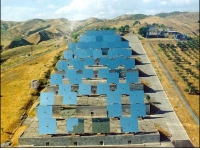Registration
You will receive an email confirming your registration.
IMGXYZ1153IMGZYXUzbekistan’s long history of renewable energy research began in the 1920s, when its first lab dedicated to water heating collectors was created. Since then Uzbekistan has continued to pioneer research in the field. Dr. Sultan H. Suleimanov, Head of Laboratory of the “Physics-Sun” Scientific Association, Materials Science Institute at the Academy of Sciences of Uzbekistan, spoke at Carnegie to elaborate on the type of renewable energy work underway in Uzbekistan. Carnegie's Martha Brill Olcott moderated the discussion.
Understanding the Need for Renewable Energy
The environmental and security benefits of renewable energy are well known in Uzbekistan, but it can also offer a vital economic benefit by providing energy to the 1500 populated settlements within the country that still have no access to energy sources. Suleimanov stressed that creating a large and diverse renewable energy supply coupled with a more efficient way to deliver it to consumers and businesses will help spur economic development.
Renewable Energy Sources: Solar, Biomas, Wind
Uzbekistan's potential solar energy output is four times greater than its annual requirements, making it Uzbekistan’s most promising source for renewable energy. Suleimanov’s “Physics-Sun” Institute have already developed a large solar furnace that provides 1 MW of thermal power to precision industries like high-end industrial ceramics used in the nuclear, optic, and oil industries.
Biomass production is also being aggressively developed. The Institute is designing a combined Stirling engine that will use biogas to provide both a cooling mechanism and hot water to Uzbek farmers. Many institutes in Uzbekistan, some working with foreign partners, are designing farm waste sytems to generate biogas. In Suleimanov’s work, one day’s worth of cow waste is now capable of producing 0.7 cubic meters of gas.
The nation’s low wind speed conditions make wind power less viable, but Suleimanov expressed hope that as technology improves wind will play a vital role in the country’s energy production.
How Uzbekistan Can Lead
Although Uzbekistan possesses ample amounts of experts on renewable energy, the industry has not expanded significantly. The major barrier to growth is low domestic fuel prices compared to the relative high cost of renewable energy: the cost of produce electricity through solar arrays was 5-20 times more expensive than traditional forms.
In order to break these barriers and encourage expansion of renewable energy research and production, the Uzbek government needs to provide incentives through tax breaks. It should also adopt the National Program on Renewable Energy, which supports renewable energy initiatives.
